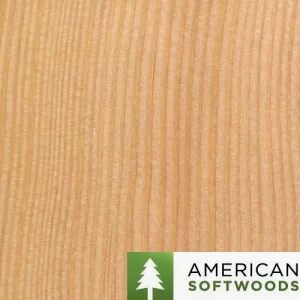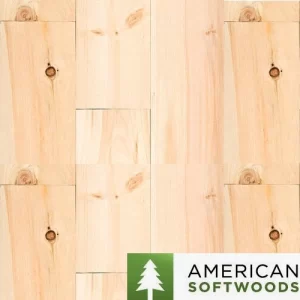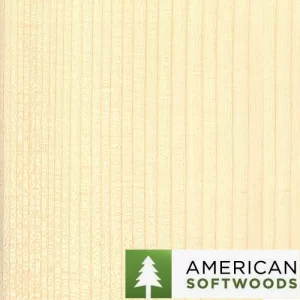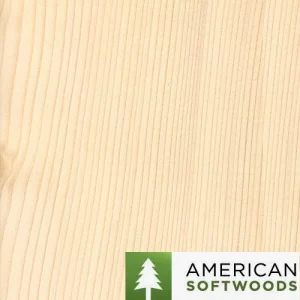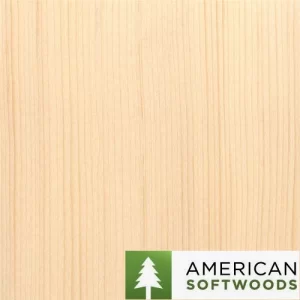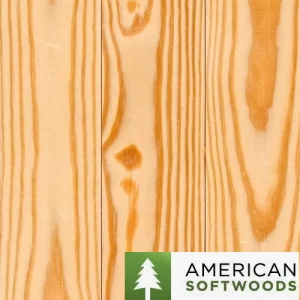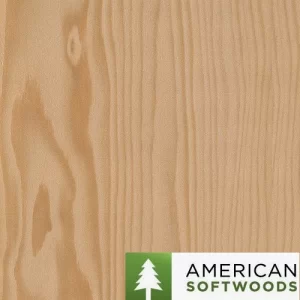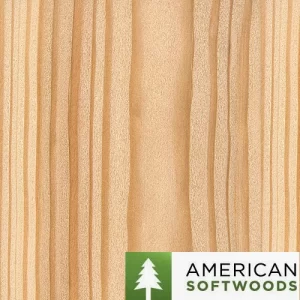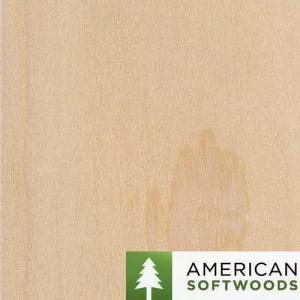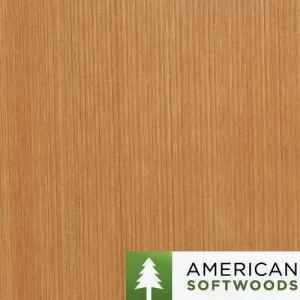-
American Softwoods Douglas Fir
American Softwoods Douglas Fir
Straight-grained and moderately heavy, with limited resin, this is one of the most attractive and strongest of the Western softwood species. The wood has a slight rosy cast; the sapwood generally a light straw colour and the heartwood a deep russet brown.
-
American Softwoods Eastern White Pine
American Softwoods Eastern White Pine
A creamy straw-colour that will darken with age to a deep rich tan. Available in a wide range of grades and sizes.
-
American Softwoods Engelmann Spruce
American Softwoods Engelmann Spruce
Among the lightest of the commercially important softwoods, although strong in relation to weight. It is nearly white, with a reddish tinge, and odourless. Structural framing grades are marketed and sold in the Spruce-Pine-Fir (south) species combination; appearance grades are often marketed in the ES-LP (Engelmann spruce/ Lodgepole pine) combination.
-
American Softwoods Hem-Fir
American Softwoods Hem-Fir
A species combination of the five true firs: California Red fir (Abies magnifica), Grand fir (Abies grandis), White fir (Abies concolor), Noble fir (Abies procera) and Pacific Silver fir (Abies amabilis) with Western hemlock (Tsuga heterophylla). Fine-grained and with interchangeable structural performance, these trees are marketed together as an elegant softwood, classified as a white wood, combining beauty and strength. A very light colour, from creamy white spring wood to a light straw-brown (hemlock) or reddish-brown (firs).
-
American Softwoods Sitka Spruce
American Softwoods Sitka Spruce
The creamy white to light yellow sapwood blends gradually into its pinkish-yellow to light-brown heartwood. It is marketed and sold separately or in the Spruce-Pine-Fir (south) species combination.
-
American Softwoods Southern Yellow Pine
American Softwoods Southern Yellow Pine
The four main species of Southern Yellow Pine are Longleaf (Pinus palustris), Slash (Pinus elliottii), Shortleaf (Pinus echinata) and Loblolly pine (Pinus taeda). The wood has a distinctive colour and grain, its sapwood ranging from white to yellowish and heartwood from yellow to reddish-brown. It combines looks, strength, and extreme ease of treatment with the highest nail-holding ability.
-
American Softwoods Western Hemlock
American Softwoods Western Hemlock
Among the harder, stronger Western softwoods, it is marketed and sold separately as well as in the Hem-fir species combination. Springwood is whitish to light yellow-brown; summerwood frequently has a purplish or reddish-brown tinge; heartwood not distinct. Small black streaks often appear in the wood.
-
American Softwoods Western Larch
American Softwoods Western Larch
Distinct among commercial softwoods for its fine, uniform, straight grain, Western larch is one of the harder, stronger and heavier softwoods. Heartwood is russet or reddish brown; sapwood is straw brown. Usually marketed and sold as Douglas fir-Larch.
-
American Softwoods Western Pines
American Softwoods Western Pines
Often referred to as the White pines, this is a commercially important group, known for its resinous odour and light colour.
-
American Softwoods Western Red Cedar
American Softwoods Western Red Cedar
A slow-growing, long-lived tree, whose aromatic wood is highly decay-resistant. The sapwood, usually less than 2.5 centimetres wide, is almost pure white, while the heartwood varies from a dark reddish brown to light yellow.
Categories


